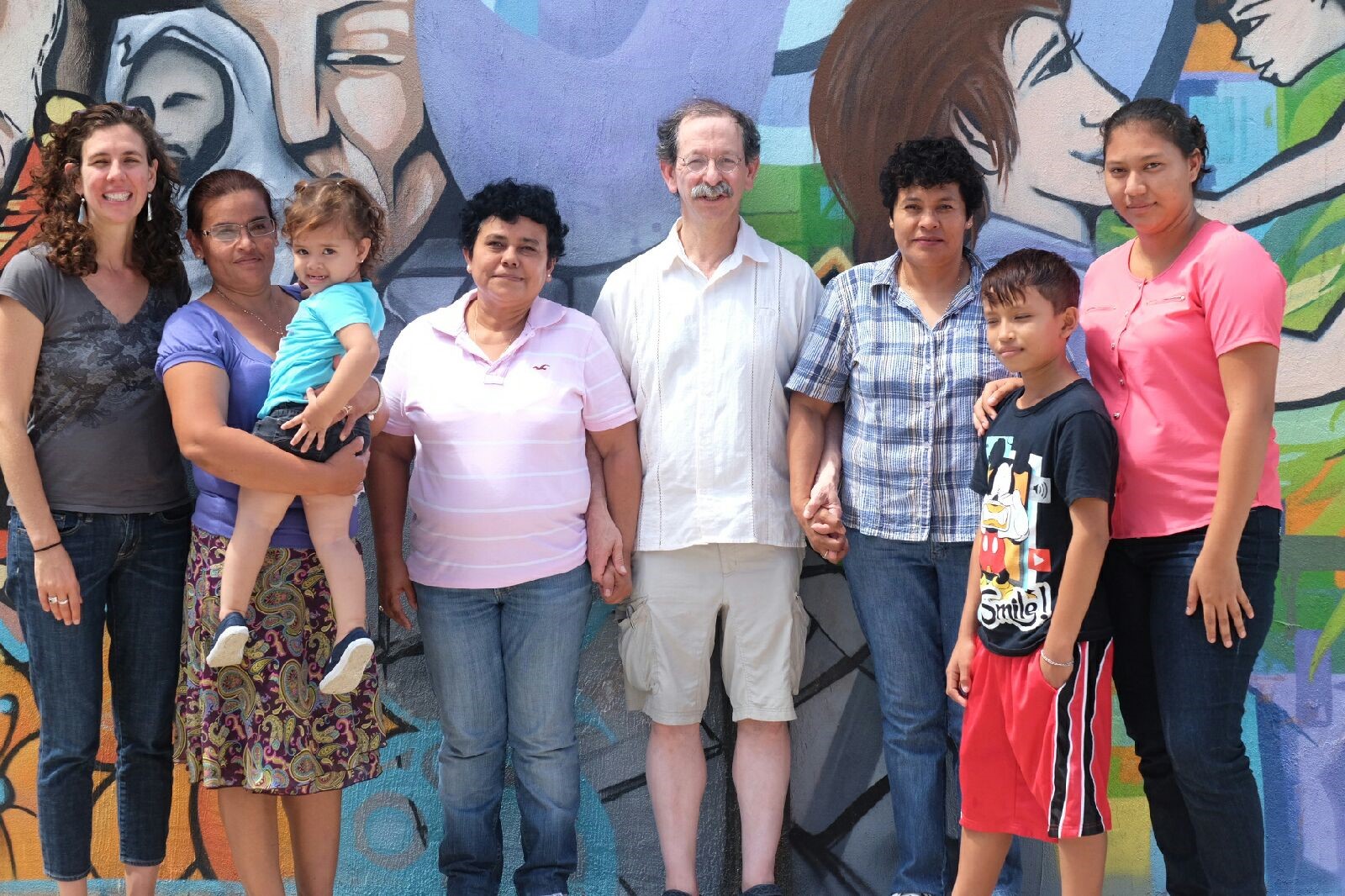
AFSC staff meet with migrant women and children at Centro de Derechos Humanos Fray Matías de Córdova A.C. Courtesy Steve Latimer
I was not looking forward to celebrating World Refugee Day this year. After all, it’s been a devastating year for refugees. Currently, 65 million people around the world are displaced by global conflicts (more than have ever existed in human history); nearly 100,000 of them are unaccompanied children who have made treacherous journeys alone.
We, the international community, have collectively and systematically failed the world’s refugees (as anyone following world events can attest). But by a twist of fate, I spent the past weekend meeting Central American refugees in southern Mexico, near the Guatemala border, who were making their way north toward Mexico City or the United States.
I’m part of an AFSC-sponsored delegation traveling around Mexico for two weeks, to learn more about the situation facing migrants from Central America and elsewhere who are trekking north through Mexico. We’ve been touring various migrant shelters around the country, as well as visiting with local community-based organizations that provide services to the refugees along the way.

I should clarify that when I say “refugees,” the people I met are not actually refugees, legally speaking. When you and I use the word “refugee,” we often imagine a man or woman, perhaps with small children, carrying a backpack with their only belongings and traveling hundreds of miles on foot, by sea, or train, afraid to return to their home country. But the vast majority of people around the world who fit into this description do not have refugee status. We know that’s what they are—people who are in need of international protection—but finding a country that will provide that protection is another matter entirely.
For people who are fleeing to the United States, they may arrive at the border, present themselves to U.S. officials, and ask for asylum. The reality is that most of these people will not be granted asylum. First, there are many procedural obstacles: finding and paying for a trustworthy lawyer to help navigate the legal system, language barriers (especially salient for indigenous people who may not speak Spanish), meeting the legal standards required to establish a credible fear of returning to one’s country. But even those who are able to overcome each of these significant hurdles may find that they will not be granted asylum by the U.S. government.
Asylum is granted to people don’t want to return to their country "because of persecution or a well-founded fear of persecution on account of race, religion, nationality, membership in a particular social group, or political opinion." Most immigration attorneys try to argue that their clients fall into a "particular social group," but the vast majority of asylum petitions from Central Americans will not be accepted by the U.S.

The stories I hear from young people fleeing Central America are those of teenagers who can’t go to school because their bus route crosses an area where gangs routinely stop them, or young people who are fleeing because a gang has forcibly tried to recruit them, or adults who have had threats made against their life for a variety of reasons (reporting illegal activity to the authorities, refusal to pay bribes, etc.). But the U.S. government does not consider these people members of a particular social group, because everyone in their countries is being affected by violence. In a country like Honduras, the murder capital of the world, it’s a given that everyone is affected by violence.
The migrants I met this weekend also had difficult stories of their own. They spoke of being gang raped by the soldiers in their neighborhood, being extorted or threatened by local gangs, and facing routine discrimination. The most disturbing part of listening to them share their stories was hearing of the physical assaults that each one encountered on their journey north (robberies, muggings, attacks by the same gangs they were fleeing). It was difficult to say goodbye to them and not worry about what other types of threats they will face as they continue traveling north.
This year, as we honor refugees around the world—people who have been granted a safe haven—we must also remember the millions and millions of people who are still looking for theirs.